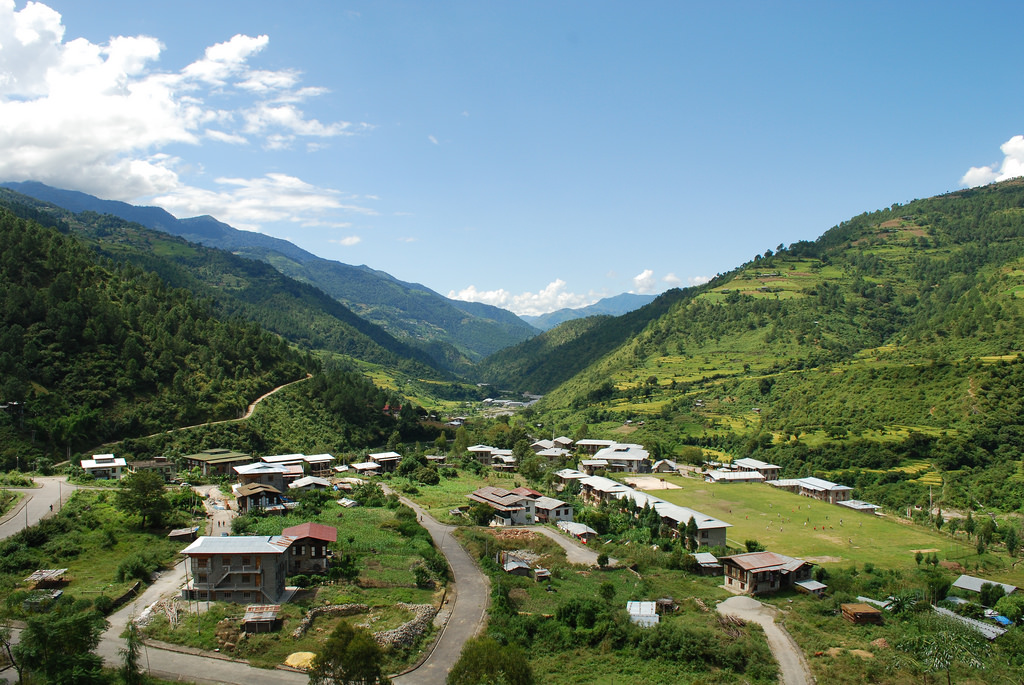
You might also like:
BHUTAN – A Buddhist kingdom in the Himalayas, home to nearly 743,000 people and a government that prefers to measure Gross National Happiness (GNH) instead of GDP.
Buddhist temples, monasteries and fortresses (called dzongs) perched on mountains contribute to some of the breathtaking scenery of this Himalayan kingdom. Visitors will be enthralled by the unique and exotic customs, architecture, food and perhaps above all, the stunning scenery Bhutan has to offer.
While most cultural tourism revolves around Bhutan’s cities, such as the capital Thimphu and Jakar (the birthplace of Buddhism in Bhutan), the best region for nature and adventure holidays is eastern Bhutan.
View over Rangjung town and the Gamri River valley in eastern Bhutan. Pic: kartografia/flickr
Eastern Bhutan is one of the most pristine and rugged natural areas of Asia and offers ample opportunities for exploring and trekking. That said, Bhutan in general is undeveloped with sizable national parks as well as wildlife sanctuaries located throughout the country. Bhutan’s nickname, “The Last Shangri-La”, comes from its reputation as a mysterious, hidden mountain paradise.
Eco-tourism, low-impact tourism or responsible tourism are prioritized in Bhutan, which means that it’s not a party destination, and visitors to the country must respect the environment and local culture at all costs. Research has concluded that eco-tourism, especially in eastern Bhutan, benefits poor rural inhabitants (the majority of the country’s population), many of whom are subsistence farmers.
Though most visitors are “cultural tourists”, eco-tourists in Bhutan tend to be trekkers. Treks range from easy and gentle to some of the most difficult in the world, with hardcore nature mountain trekking and cultural treks combined with nature observation and bird-watching. Wikitravel lists no less than 24 treks through Bhutan. Popular treks include journeying from Paro to Thimphu and various Himalayan mountain forest treks with stops in small traditional Buddhist villages.

Along the Jhomolhari Trek in Bhutan. Pic: Ian Cochrane/flickr
Here are few things to remember when traveling to Bhutan:
-
72.5 percent of the country is forest land (30 percent national parks and wildlife sanctuaries + 9.5 percent biological corridors). The country has a law that says 60 percent of its territory must always remain forested.
-
Bhutan had no paved roads until the 1960s.
-
The country’s official language is Dzongkha.
-
“Land of the Thunder Dragon” is the literal translation of Bhutan.
-
Bhutan was closed to visitors until 1974.
-
When offered food, it is customary in Bhutan to refuse it by covering your mouth with your hand, only accepting after two or three offers.
-
Bhutan’s seasons are similar to those in Western Europe, but weather and temperatures are variable depending on where you are, especially in terms of elevation. That said, spring and fall are best for trekking.
Source: travelwireasia.com
